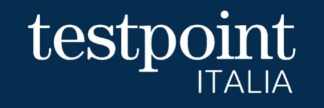Telephone interviews – the so-called CATI (Computer Assisted Telephone Interview)interviews – represent one of the most classic market research methodologies as they allow you to quickly reach a very large and well-distributed sample of respondents throughout the national territory. They are particular useful when it is necessary to investigate the Customer Satisfaction, i.e. the level of consumer satisfaction with a particular brand. Today, we want to tell you about one of these researches, having an interviewer explain how the work was done.
300 CATI interviews
We want to tell you about a market research with the CATI methodology that Testpoint recently carried out about eyeglass frames.
It involved interviewing managers of optical stores -belonging to chains or independent store, to find out which brands of frames they offer to their customers, if they know and sell the tested brand and what their level of satisfaction with respect to this brand is.
The protagonist of this research was Testpoint CATI center with its 15 workstations. These were very short and simple interviews, lasting no more than ten minutes. The telephone numbers of the stores to contact were included in a list provided by the client company.
The interviewer used a questionnaire provided by the Client and displayed on the PC screen and they asked questions over the phone.
These were simple but very focused closed-end questions: you have to take into account that whoever answers the phone is a person who is working and therefore can only give a few minutes of their time!
How the interviews took place
We asked Gabriella, 24 y.o., who works as an interviewer at Testpoint CATI center, to tell us how this job was done.
“CATI interviews are an important part of our work, they are used when you need to interview many people all over Italy with short and targeted interviews in which it is not required to show materials. In this case, a simple telephone contact is fine. We operators have a computer on which we can access a questionnaire through a link. We call from the contact list given to us one of the names to be interviewed, we ask if the person we are looking for is available to answer at that moment, otherwise we make an appointment for a later time.
The research we did for the eyewear brand was interesting. We carried out 300 interviews, contacting optical stores in different regions of Italy. Following the questionnaire, we first asked some questions to understand if the respondents met the criteria required to participate in the survey (this is a phase that is called “screening phase”), then we proceeded with questions regarding the activity and the brands marketed and the satisfaction level with each brand.
The CATI questionnaire is very rigid: we cannot under any circumstances intervene or change the order of the questions, we can at most give some explanation if a question is not clear.
I must say that in general we find a good willingness among respondents to give these short interviews: after all, they know that it is their way to let companies know their opinion and help them to improve their products.”

